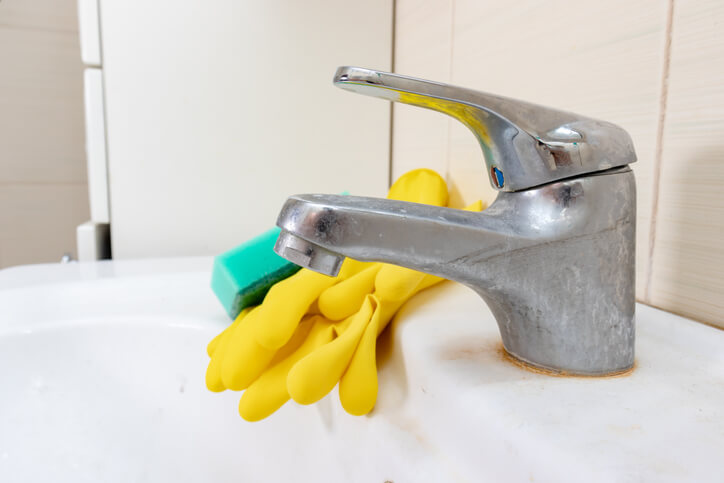
The majority of homes in the United States have hard tap water. This means it contains minerals, including calcium and magnesium, that stay behind when the water evaporates. As a result, your faucets, showerheads, coffee maker, washing machine, and dishwashers can develop limescale. This white, chalky substance isn’t just unsightly—it can also damage your plumbing appliances, clog your fixtures, and shorten the life of your water heater.
If you struggle to keep mineral deposits at bay, follow these tips for reducing and removing limescale buildup.
Reducing Hard Water Deposits
- Install a water softener: This technology replaces the calcium and magnesium in hard water with sodium chloride (salt). A whole-house water softener can improve the water quality at every tap.
- Install a water conditioner: Using magnetism, electrolysis, or electrical currents, water conditioners slow the rate at which mineral deposits solidify on surfaces.
- Flush your water heater: Remove and prevent deposits at the bottom of your water heater by draining a few gallons from the tank a few times each year.
- Lower the water heater temperature: Limescale develops faster in hot water, so decrease the temperature from the standard 140 degrees to 120 degrees.
- Wipe surfaces dry: Minerals are left behind when water evaporates, so wiping up the water before it dries can prevent limescale buildup.
- Apply preventative sprays to shower doors: Squeegee the glass after each shower or spray it with a product designed to prevent hard water stains.
Removing Limescale Buildup
- White vinegar: Distilled white vinegar dissolves hard water deposits. To remove existing limescale buildup, lay a vinegar-soaked rag on faucets, soak showerheads in vinegar, spray shower doors with vinegar, and run an empty dishwasher or washing machine cycle with vinegar.
- Lemon juice: Similar to vinegar, lemon juice is an acid that easily dissolves calcium deposits. Spray lemon juice on plumbing fixtures, allow it to sit for several minutes, and then rinse and wipe dry.
- Borax: Treat toilet bowl rings with one-quarter cup borax and 1 cup vinegar. First, spread the borax around the bowl with a toilet brush. Then, add white vinegar and allow it to sit for 20 to 30 minutes. Scrub if needed, and then flush the toilet.
- Purposely formulated detergents and powders: While many people prefer using natural cleaners whenever possible, white vinegar and lemon juice may not be enough to remove particularly thick limescale. In this case, look for commercial products designed specifically to treat this issue.
- Hydro jetting: If you suspect limescale buildup inside your pipes, hire a plumber to perform hydro jetting. This thorough flushing method clears out all deposits and blockages for free-flowing pipes.
Whether you need help reducing limescale or removing dissolved calcium deposits, Puget Sound Plumbing and Heating can help. We have proudly served the Seattle area for over 20 years, so you can trust us to offer excellent hard water solutions. Contact us online or call us at (206) 350-0079 to schedule the plumbing services you need.


